Abstract
Ever since the initial reports of the enediyne anticancer antibiotics in the late 1980s, researchers from a number of disciplines have been devoting increasing attention to their chemistry, biology, and potential medical applications. Synthetic chemists and molecular designers have been engaged in attempts to synthesize these molecules and to model their unique architecture. Considerable efforts have been directed at understanding and mimicking the various processes involved in the targeting, activation, and DNA cleavage associated with these natural products. This review summarizes the main contributions to the field, with particular emphasis on work from our laboratories. Highlights include studies of the Bergman reaction, which is central to the mechanism of action of enediynes, the design and chemical synthesis of a number of these systems, and biological studies with selected molecules. Finally, the total synthesis of calicheamicin gamma 1I, the most prominent member of this class of naturally occurring compounds, is discussed.
Full text
PDF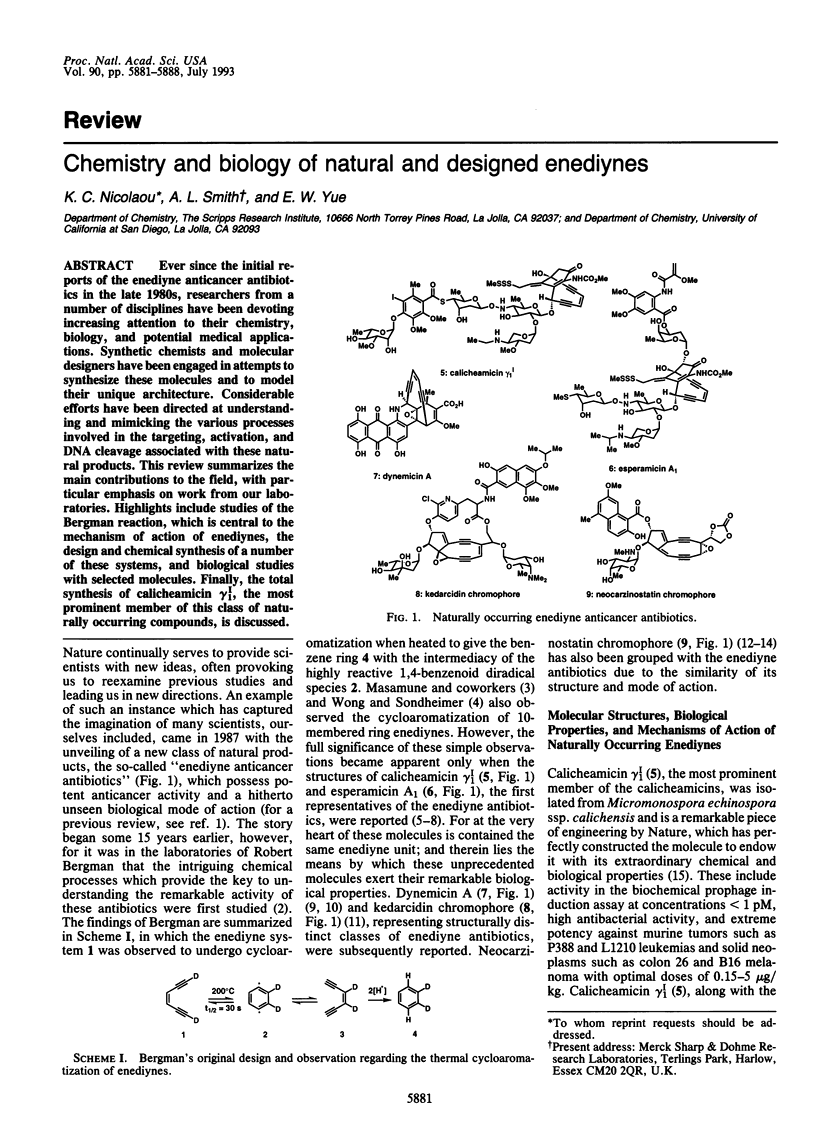
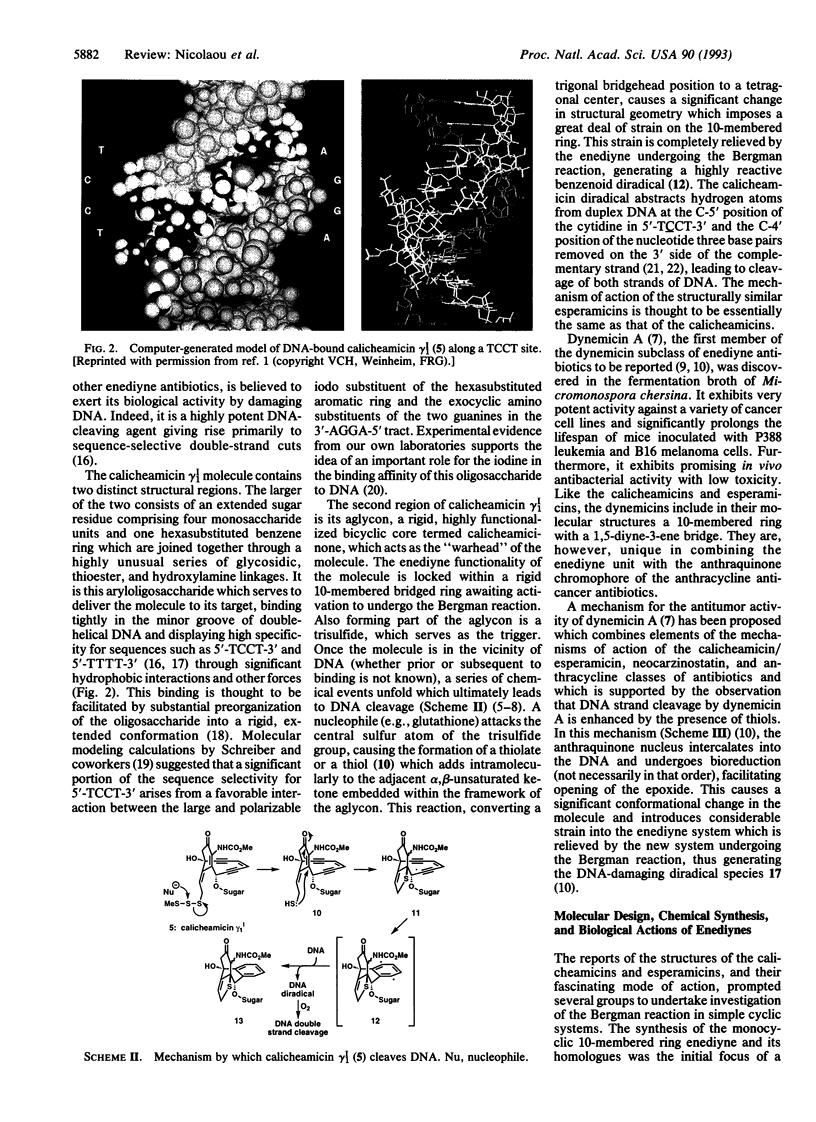
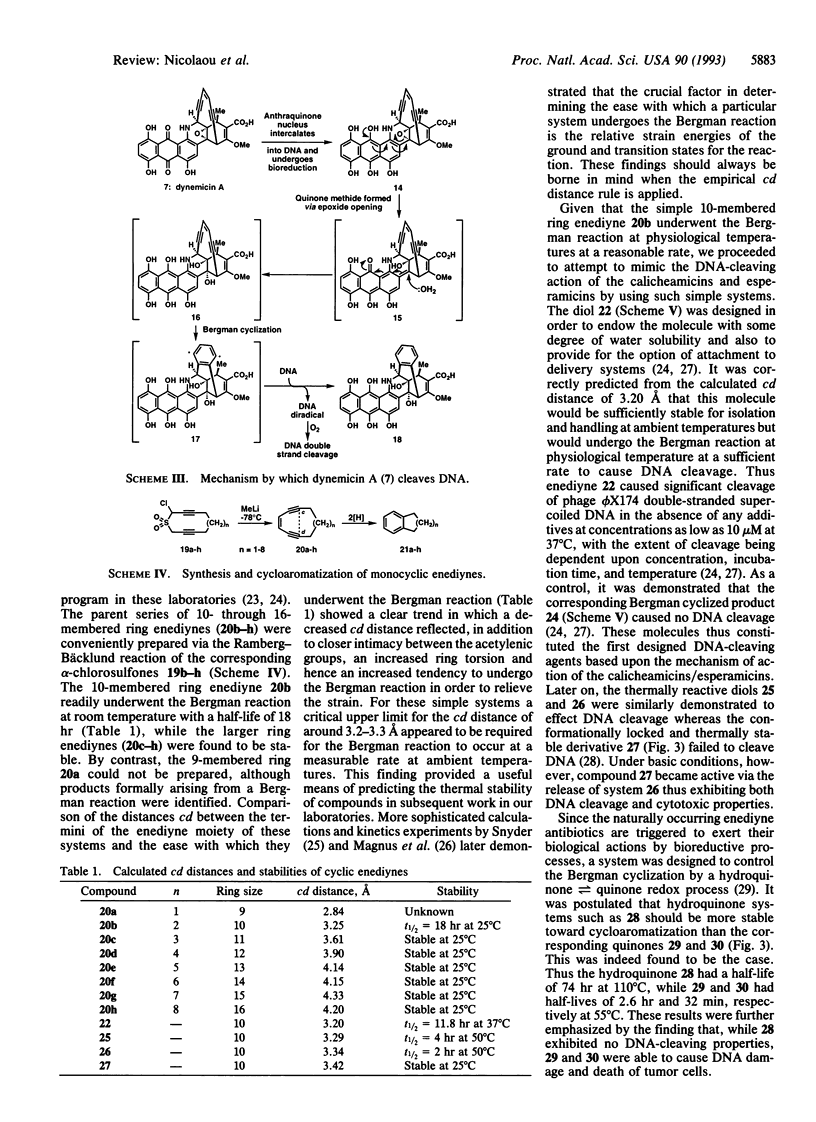
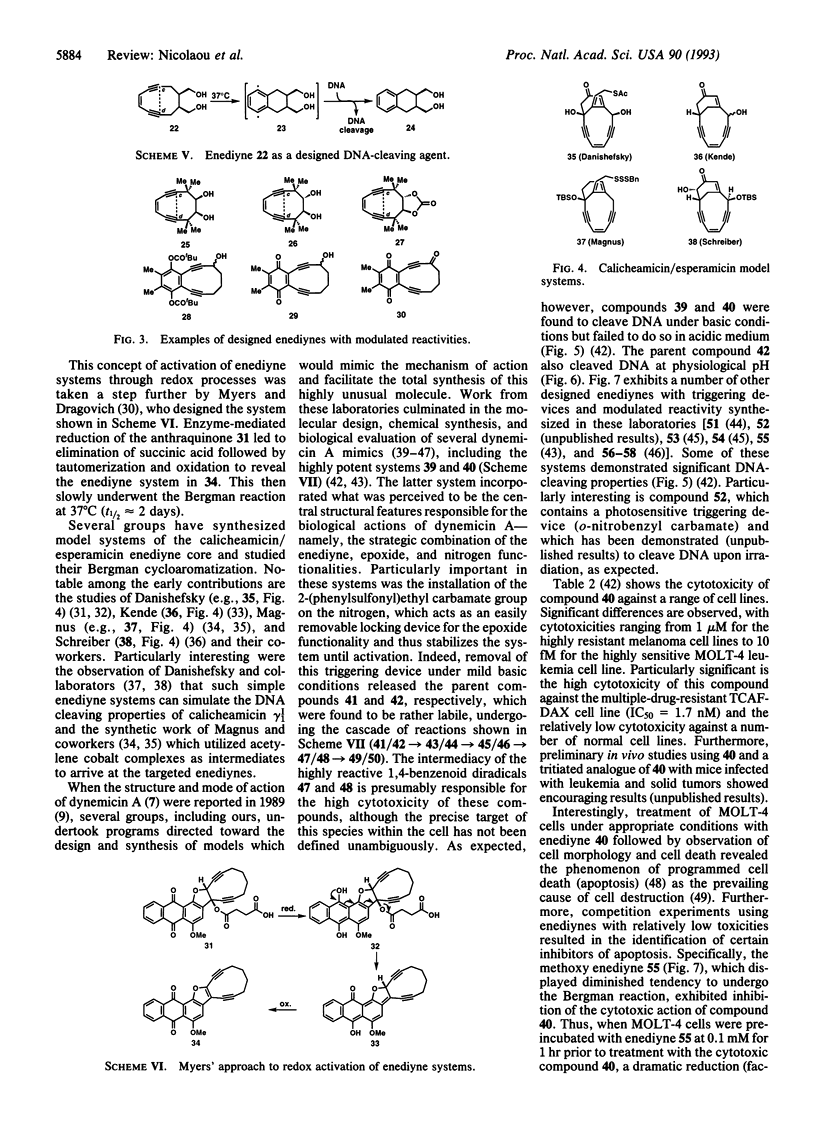
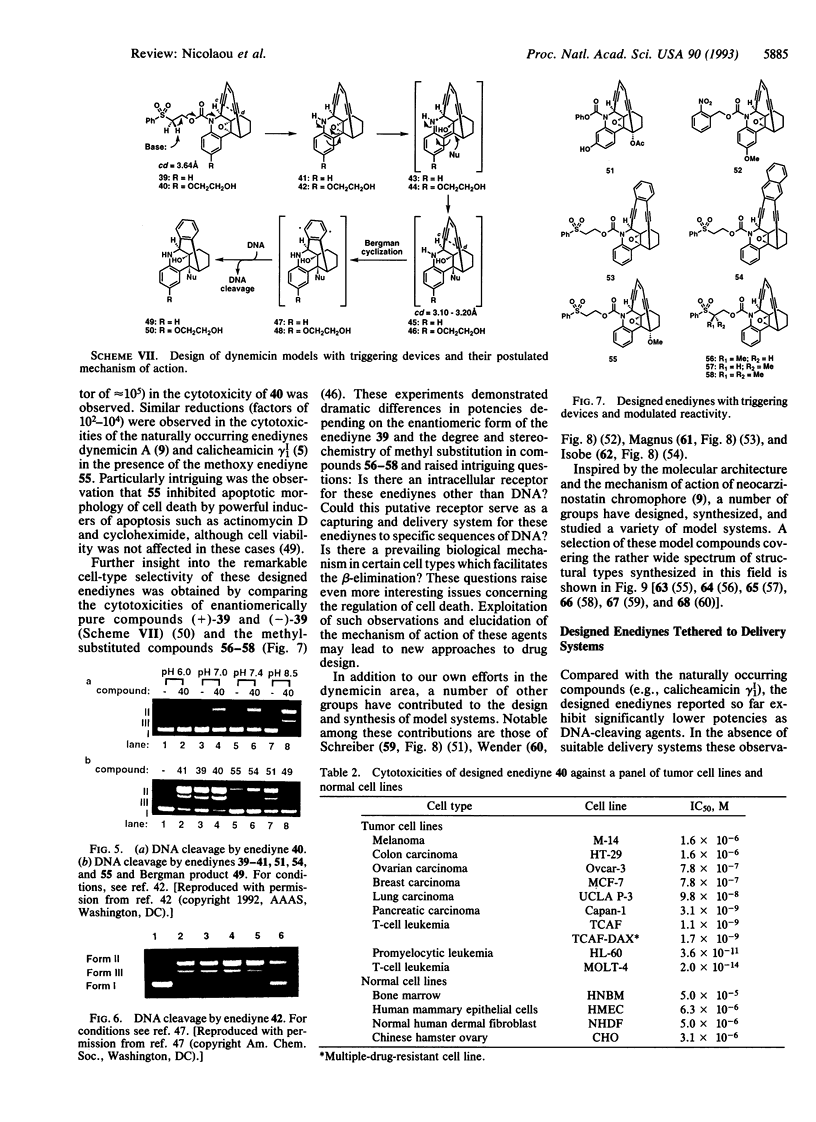
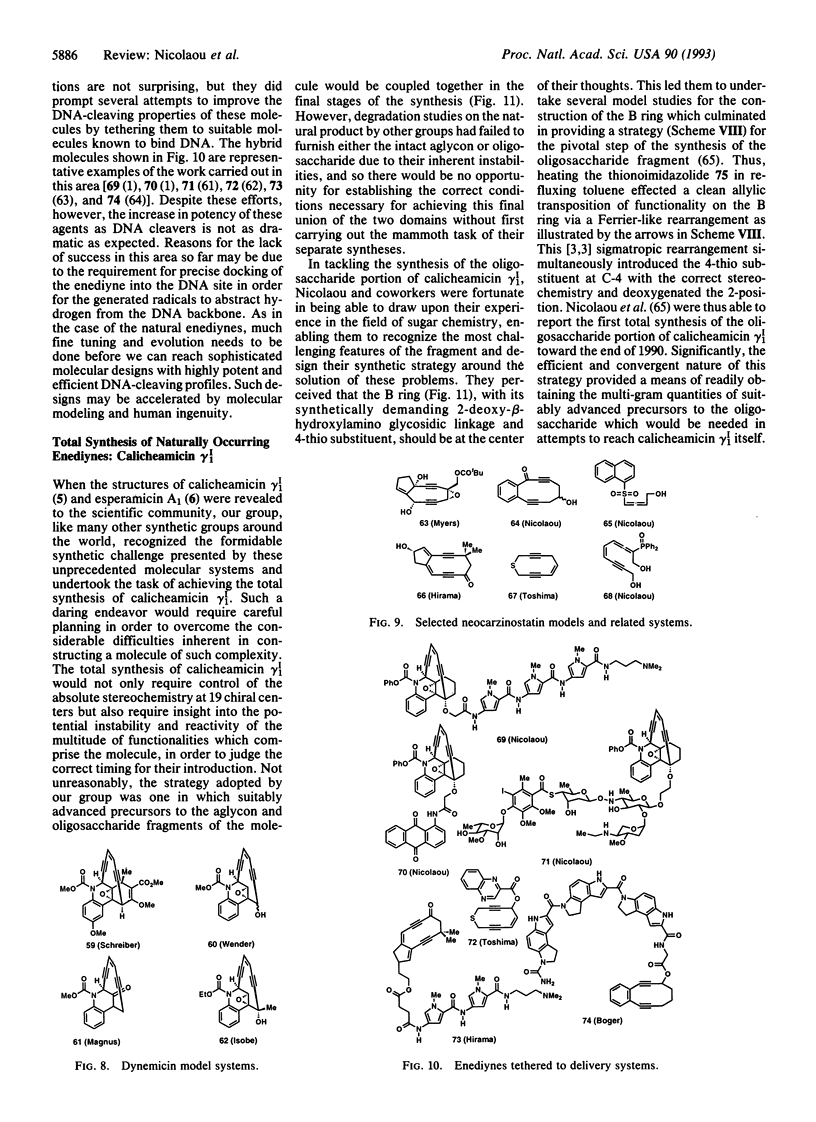
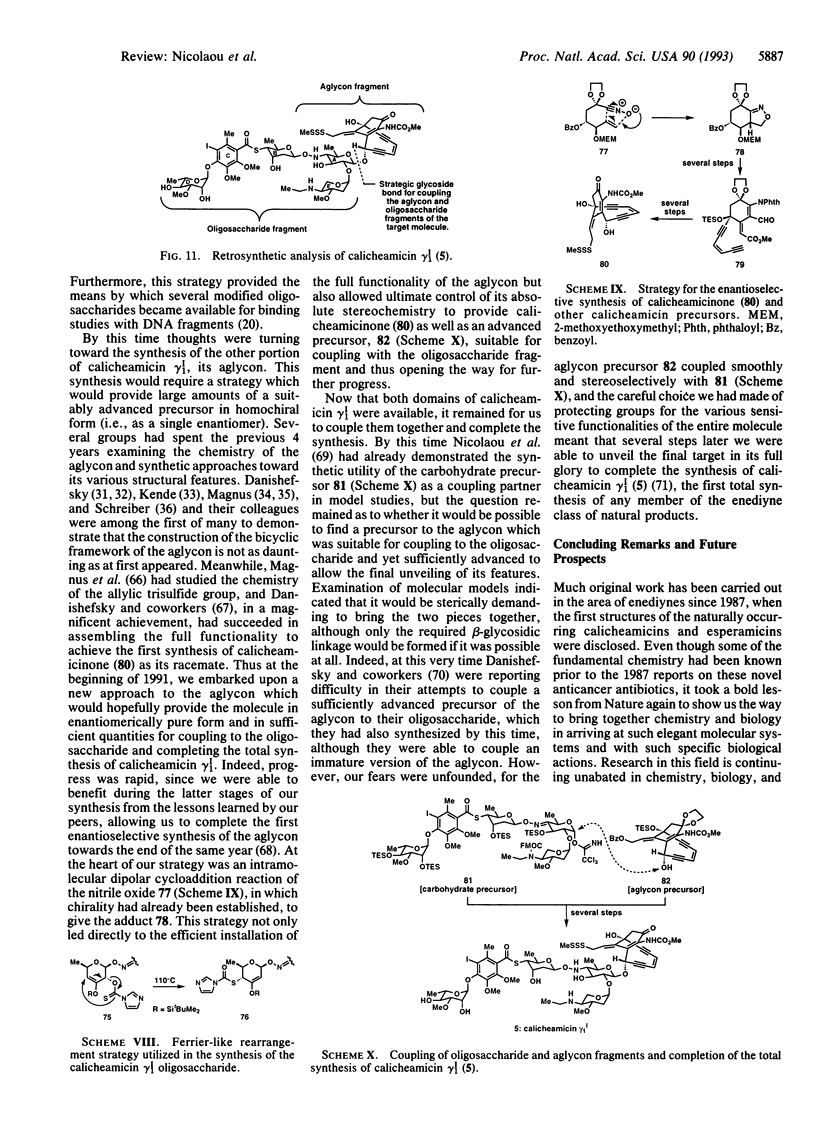
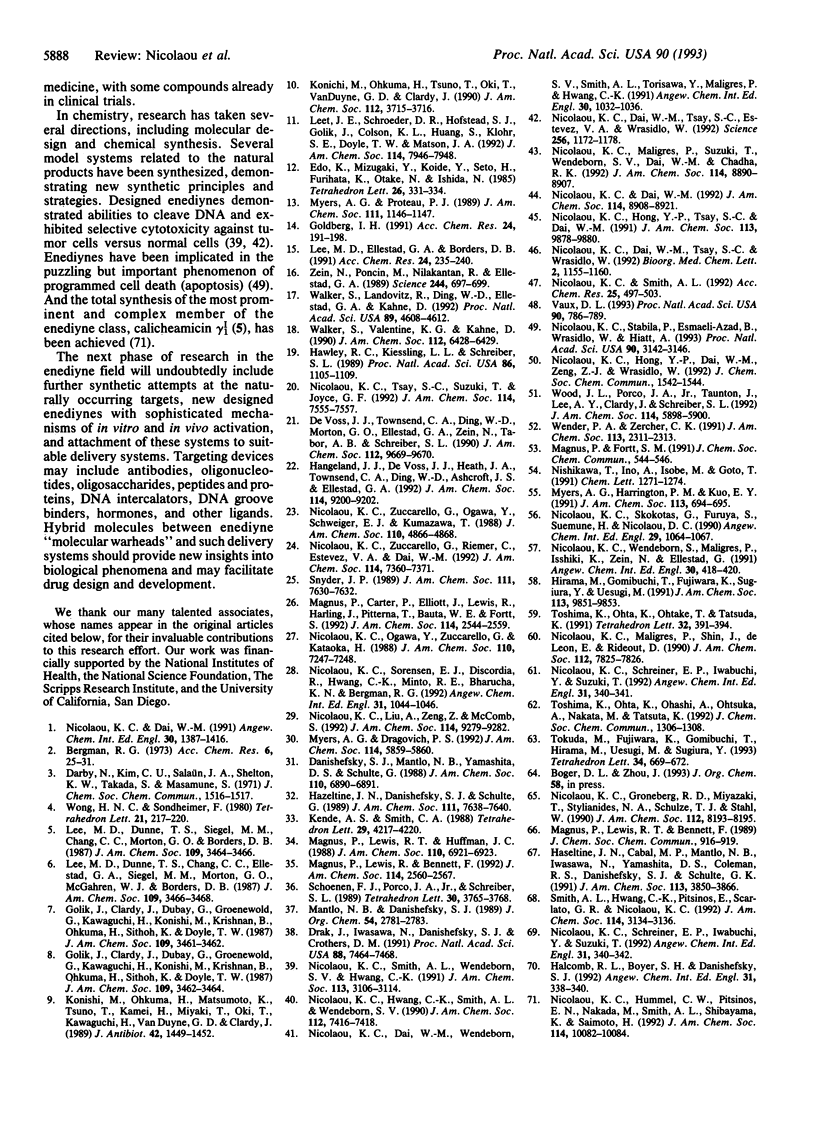
Images in this article
Selected References
These references are in PubMed. This may not be the complete list of references from this article.
- Drak J., Iwasawa N., Danishefsky S., Crothers D. M. The carbohydrate domain of calicheamicin gamma I1 determines its sequence specificity for DNA cleavage. Proc Natl Acad Sci U S A. 1991 Sep 1;88(17):7464–7468. doi: 10.1073/pnas.88.17.7464. [DOI] [PMC free article] [PubMed] [Google Scholar]
- Hawley R. C., Kiessling L. L., Schreiber S. L. Model of the interactions of calichemicin gamma 1 with a DNA fragment from pBR322. Proc Natl Acad Sci U S A. 1989 Feb;86(4):1105–1109. doi: 10.1073/pnas.86.4.1105. [DOI] [PMC free article] [PubMed] [Google Scholar]
- Konishi M., Ohkuma H., Matsumoto K., Tsuno T., Kamei H., Miyaki T., Oki T., Kawaguchi H., VanDuyne G. D., Clardy J. Dynemicin A, a novel antibiotic with the anthraquinone and 1,5-diyn-3-ene subunit. J Antibiot (Tokyo) 1989 Sep;42(9):1449–1452. doi: 10.7164/antibiotics.42.1449. [DOI] [PubMed] [Google Scholar]
- Nicolaou K. C., Dai W. M., Tsay S. C., Estevez V. A., Wrasidlo W. Designed enediynes: a new class of DNA-cleaving molecules with potent and selective anticancer activity. Science. 1992 May 22;256(5060):1172–1178. doi: 10.1126/science.256.5060.1172. [DOI] [PubMed] [Google Scholar]
- Nicolaou K. C., Stabila P., Esmaeli-Azad B., Wrasidlo W., Hiatt A. Cell-specific regulation of apoptosis by designed enediynes. Proc Natl Acad Sci U S A. 1993 Apr 15;90(8):3142–3146. doi: 10.1073/pnas.90.8.3142. [DOI] [PMC free article] [PubMed] [Google Scholar]
- Vaux D. L. Toward an understanding of the molecular mechanisms of physiological cell death. Proc Natl Acad Sci U S A. 1993 Feb 1;90(3):786–789. doi: 10.1073/pnas.90.3.786. [DOI] [PMC free article] [PubMed] [Google Scholar]
- Walker S., Landovitz R., Ding W. D., Ellestad G. A., Kahne D. Cleavage behavior of calicheamicin gamma 1 and calicheamicin T. Proc Natl Acad Sci U S A. 1992 May 15;89(10):4608–4612. doi: 10.1073/pnas.89.10.4608. [DOI] [PMC free article] [PubMed] [Google Scholar]
- Zein N., Poncin M., Nilakantan R., Ellestad G. A. Calicheamicin gamma 1I and DNA: molecular recognition process responsible for site-specificity. Science. 1989 May 12;244(4905):697–699. doi: 10.1126/science.2717946. [DOI] [PubMed] [Google Scholar]





